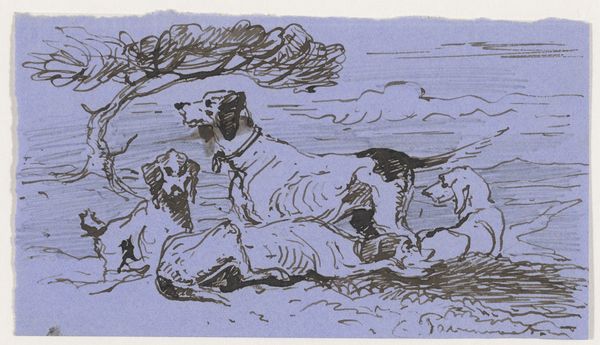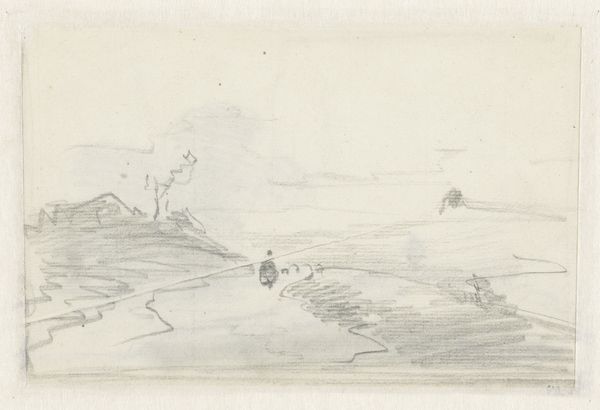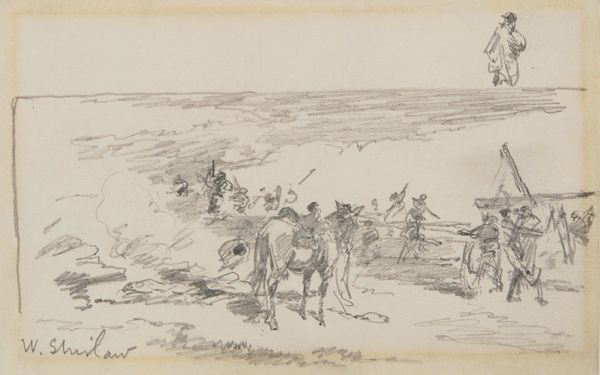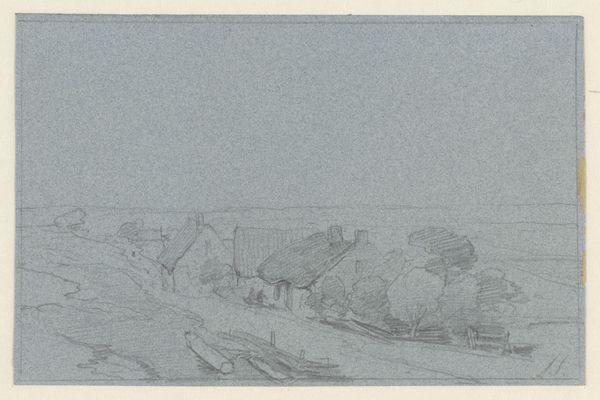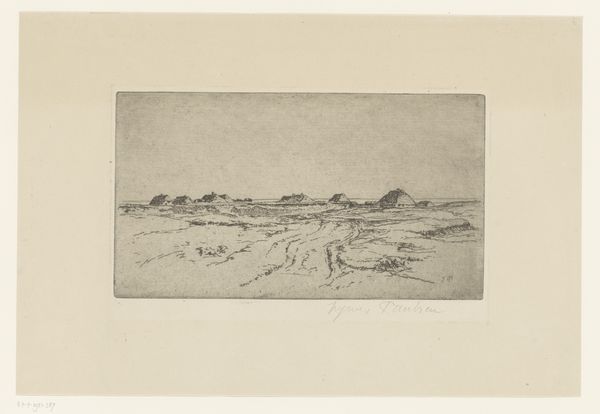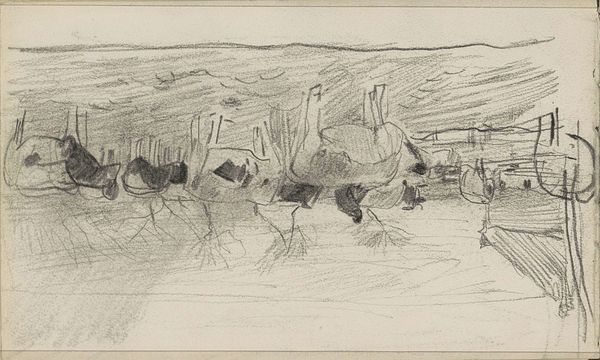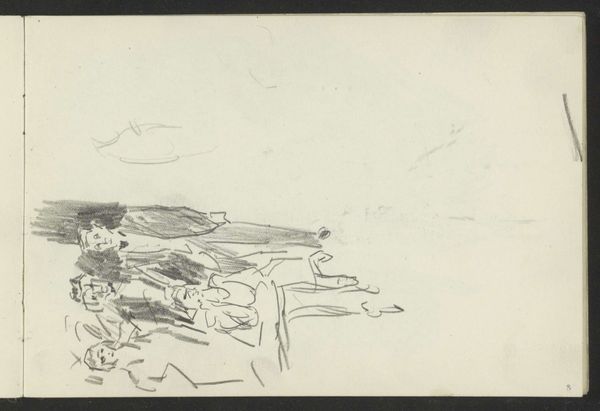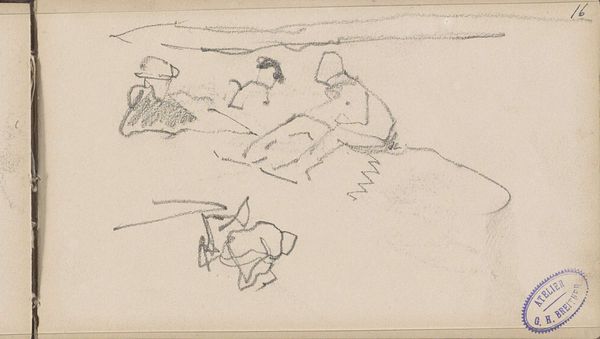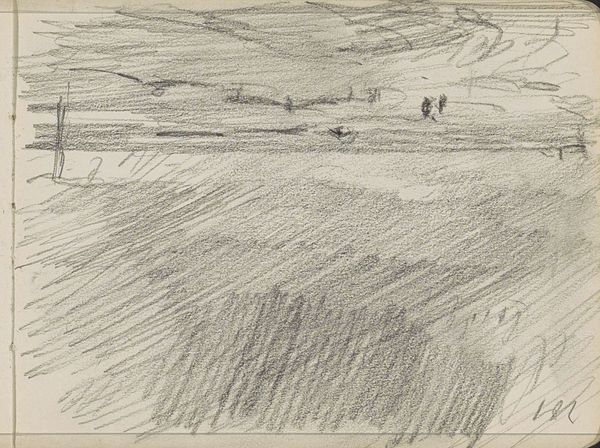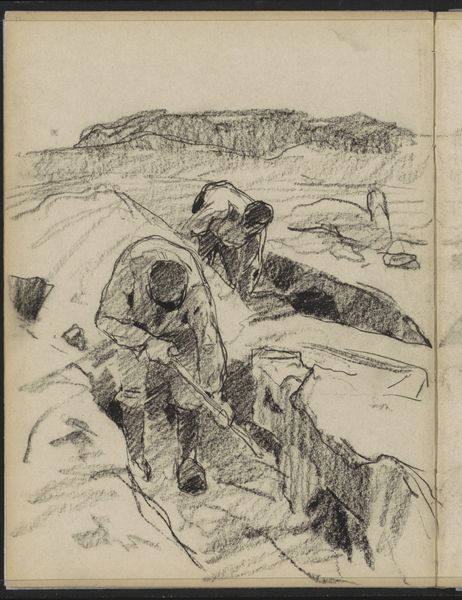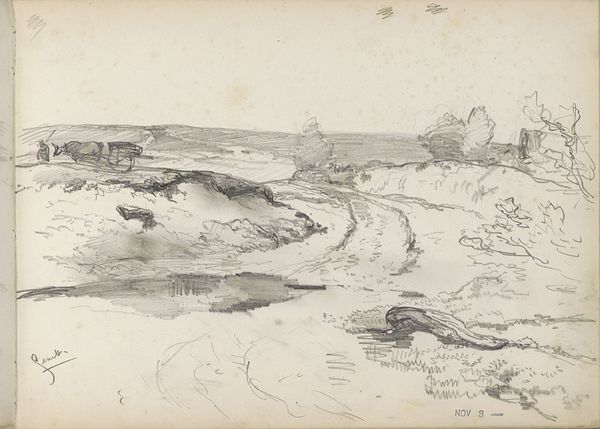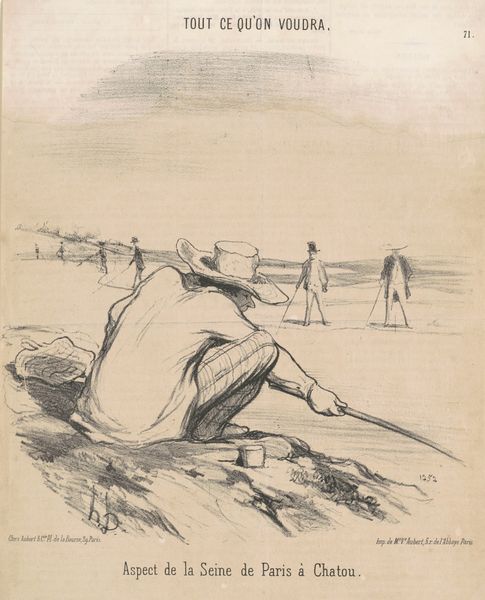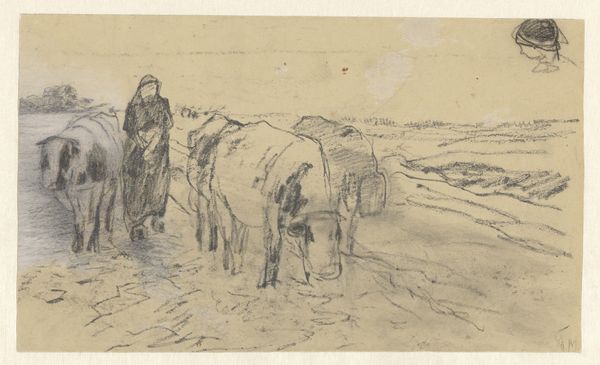
drawing
#
drawing
#
amateur sketch
#
light pencil work
#
pen sketch
#
pencil sketch
#
incomplete sketchy
#
ink drawing experimentation
#
pen-ink sketch
#
sketchbook drawing
#
watercolour illustration
#
watercolor
Dimensions: sheet: 20.64 × 32.86 cm (8 1/8 × 12 15/16 in.)
Copyright: National Gallery of Art: CC0 1.0
Editor: This is *Nile Journey, No. 20*, a drawing from 1890 by Elihu Vedder. It looks like it's done in pencil and maybe watercolor. I’m immediately drawn to its calm, almost desolate, feeling. It seems like a very personal, almost private, record of a moment in time. What do you see in this piece that sheds light on its cultural significance? Curator: What I see here is a visual document deeply embedded in the Western fascination with and construction of the "Orient" during the late 19th century. Vedder’s trip to Egypt and these accompanying sketches are evidence of the era's imperial gaze and the artistic appropriation that came with it. The muted colors and sketch-like quality, though seemingly "private," actually reinforce a romanticized idea of a timeless, unchanged Egypt, available for Western consumption. Editor: So, you're saying that even seemingly simple sketches can carry the weight of that colonial perspective? How does the artistic style play into that? Curator: Exactly. The informality and the watercolor medium give the impression of authenticity, a glimpse into the “real” Egypt. This, of course, is a constructed reality, framed and filtered through Vedder's European eyes. Notice the composition – figures resting passively in the landscape. How might this depiction reinforce certain power dynamics? Editor: I guess I hadn't considered that. The composition seems to emphasize the figures’ passivity against the vastness of the landscape, almost like they’re part of the scenery, rather than active participants in their own world. Curator: Precisely. Vedder is participating in a long history of Orientalist art. Understanding this context helps us to view this drawing critically. Even the most personal expressions are shaped by socio-political forces. Editor: It’s amazing how much context is embedded in a single sketch. It really forces you to question the way you initially interpret art. Curator: Indeed. The political dynamics of visual representation should be questioned, so that we might develop a broader understanding of art history.
Comments
No comments
Be the first to comment and join the conversation on the ultimate creative platform.
